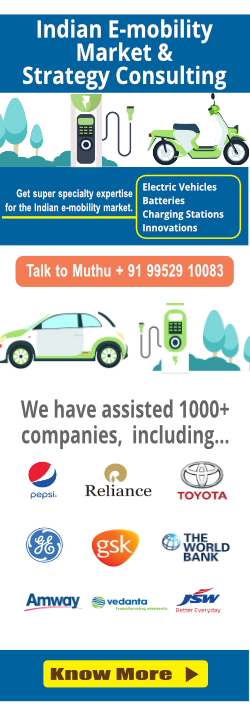Distributed energy generation is a mechanism in which energy is derived from sources of energy that are used close to where the energy is required. This is in contrast to the current situation of energy generation in which the sources of energy are concentrated. For instance, electricity is today generated from large, centralized power plants. Gasoline and diesel are today extracted and refined by large, centralized state utilities or private companies.
In the case of distributed energy generation, energy is generated in close proximity to where it is used. Examples of distributed energy generation are use of bagasse for heat or electricity in sugar mills, solar panels on homes for electricity, solar water heaters on homes for heating and use of biomass at village levels to generate electricity using gasifiers and gensets.
As the world moves towards more renewable sources of energy, distributed energy generation will become more widespread in India.
Consider the following:
1. India has about 20 million agriculture pumps which are grossly inefficient. Of these 20 million, 5 million run on diesel which make them very costly to operate. There is an opportunity to create distributed sources of energy which can power these diesel pumps on a standalone basis.
2. India has huge Agri-waste (600 million tonnes) which can be used locally for power generation using either biomass gasification or bio-methanation route.
3. There are a number of locations in India that are suitable for producing power from small hydro stations.
4. Landfill gas and electricity generation from organic waste is another area where India could utilize existing waste resources for generating energy at a local level.
While the above are the advantages of utilizing distributed sources for producing energy in India, there are some bottlenecks in the way of using distributed energy sources in a big way.
1. Capacity factors can be low for smaller versions of some renewable energy sources – for instance, micro wind, while good in theory, suffers from low capacity factors making it impractical at this point in time
2. Cost of many renewable energy sources for DEG are not yet low enough. It still costs Rs 16-17 to generate 1 kWh of electricity using solar PV. When the household is getting the same at Rs 4 from the utility, it is next to impossible to convince them to use a DEG! Incentives such as those proposed to be provided by the National Solar Mission appear to be more intended for large-scale users of renewable energy sources. Unless equivalent benefits accrue to small and micro users, distributed energy generation will not be adopted on a large scale.
3. Low awareness – Awareness of renewable energy sources is very low in India. As a consequence, even fewer realize that there are distributed sources of energy that their households or small scale businesses could make use.
In summary, distributed energy sources hold excellent future potential for India, but there needs to be more proactive steps from the government and the investing community to ensure that the costs are brought down and the awareness of these sources enhanced for India to reap the full benefits from DEG.
Some useful links in this regard










Trackbacks/Pingbacks